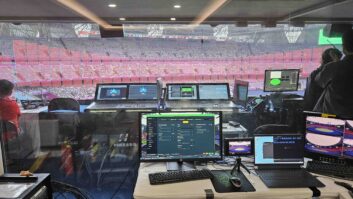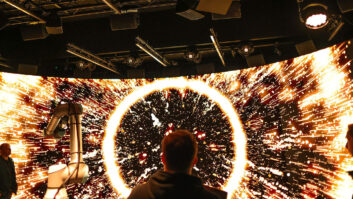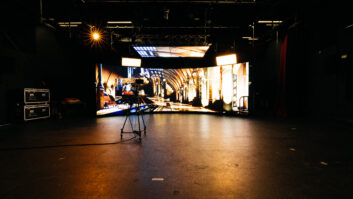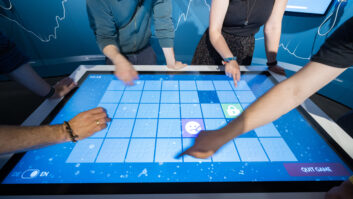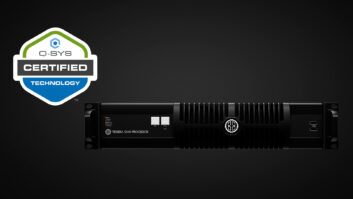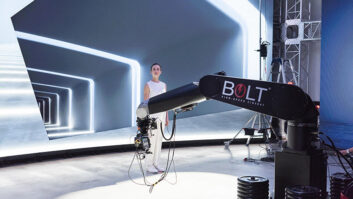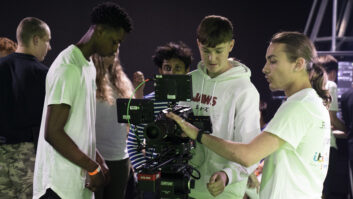Brompton Technology products have contributed to a new virtual production studio in Slough, UK, which boasts preconfigured curved LED as part of a Virtual Production Stage, ideal for shooting in-camera VFX.
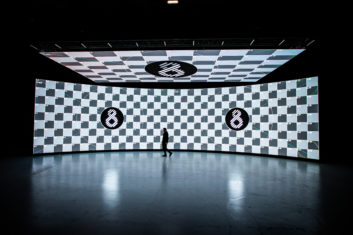 Leading video technology company, 80six, recently opened the doors to the new studio, with approximately 335m2 dedicated to the Virtual Production Stage which includes an 18m x 4.5m high-resolution LED volume, built with award-winning ROE Visual Diamond DM 2.6mm for the rear wall and ROE Carbon 5.7mm for the LED ceiling, along with movable lighting dollies. The ROE screens run on Brompton Tessera SX40 4K Version 3.1 LED processors.
Leading video technology company, 80six, recently opened the doors to the new studio, with approximately 335m2 dedicated to the Virtual Production Stage which includes an 18m x 4.5m high-resolution LED volume, built with award-winning ROE Visual Diamond DM 2.6mm for the rear wall and ROE Carbon 5.7mm for the LED ceiling, along with movable lighting dollies. The ROE screens run on Brompton Tessera SX40 4K Version 3.1 LED processors.
80six has been at the leading edge of building and implementing xR stages and has now directed its attention to live LED in-camera virtual production, which uses similar technologies. The company has spent the last 20 months carrying out extensive R&D with LED and cameras for film and TV productions with trusted partners such as Epic Games, Dimension Studio, DNEG & OSF.
“Throughout the last couple of years, we have carried out various tests that have given us a solid understanding of the principles of VP,” said says Jack James, director at 80six. “We can now confidently advise our clients as to the benefits and limitations they can expect when shooting in-camera VFX or when using LED video panels as light sources.
“Brompton’s 3.1 software high frame rate capabilities allow for smooth, fast play-back of content, which is particularly useful for slow-motion for film, TV and esports. The benefits of virtual production are undeniable and companies like Brompton are constantly developing new software features that open up even more possibilities.
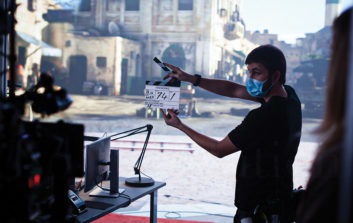 “Brompton’s Frame Remapping is another interesting concept we are looking forward to exploring as it means you can now have multiple cameras shooting the same physical screen, but with different layers of content represented on each individual frame for each camera. As a filmmaker, this means you are no longer limited to a particular shot; you can effectively have two scenes running at the same time, or a green screen frame as the second scene that you can then use for keying. This gives filmmakers the flexibility to edit in post-production.”
“Brompton’s Frame Remapping is another interesting concept we are looking forward to exploring as it means you can now have multiple cameras shooting the same physical screen, but with different layers of content represented on each individual frame for each camera. As a filmmaker, this means you are no longer limited to a particular shot; you can effectively have two scenes running at the same time, or a green screen frame as the second scene that you can then use for keying. This gives filmmakers the flexibility to edit in post-production.”
Through a combination of high-resolution LED screens, video games engines, camera tracking technology and media servers, 80six’s studios give clients premier access to the newest virtual production technologies and resources.
